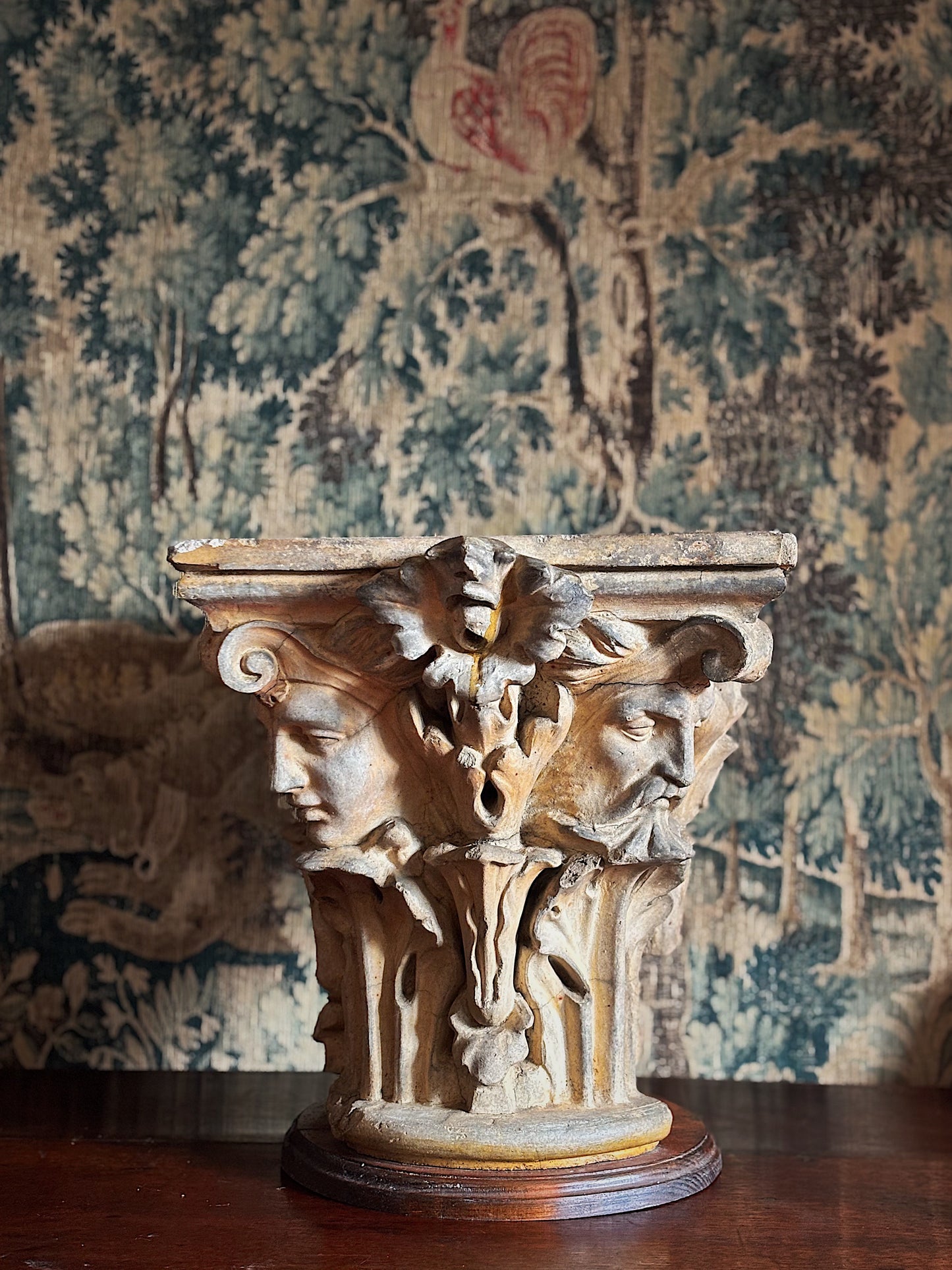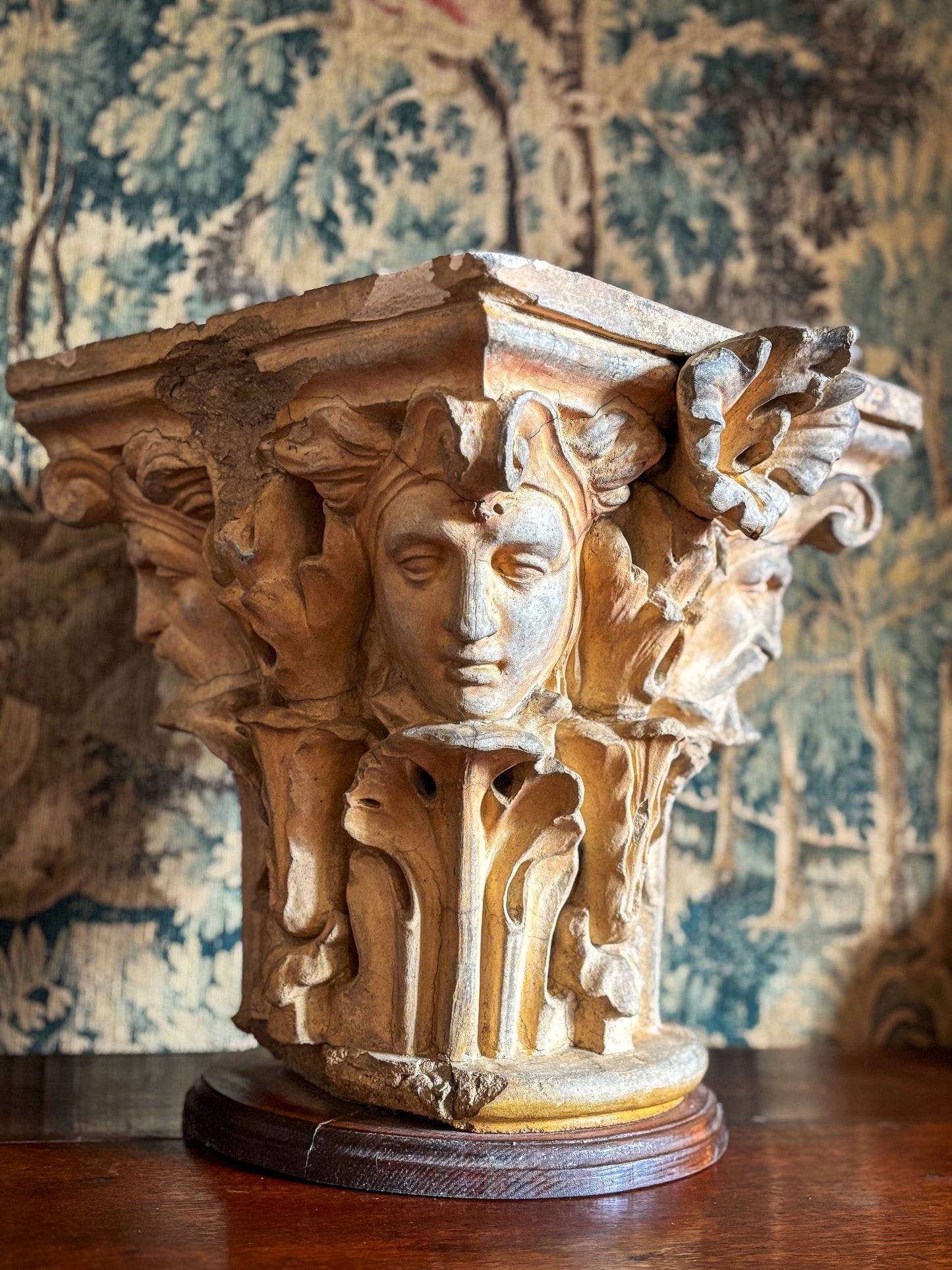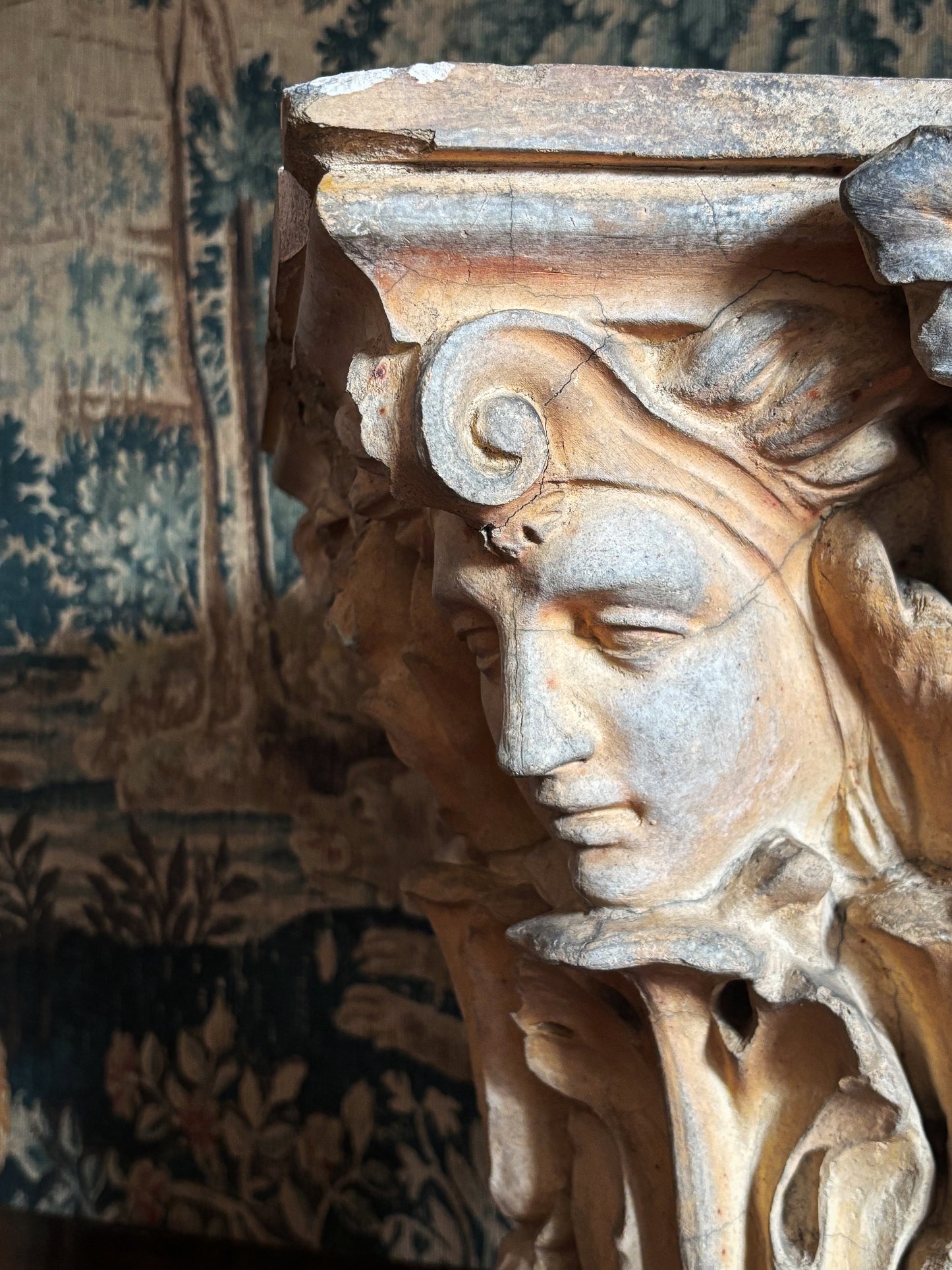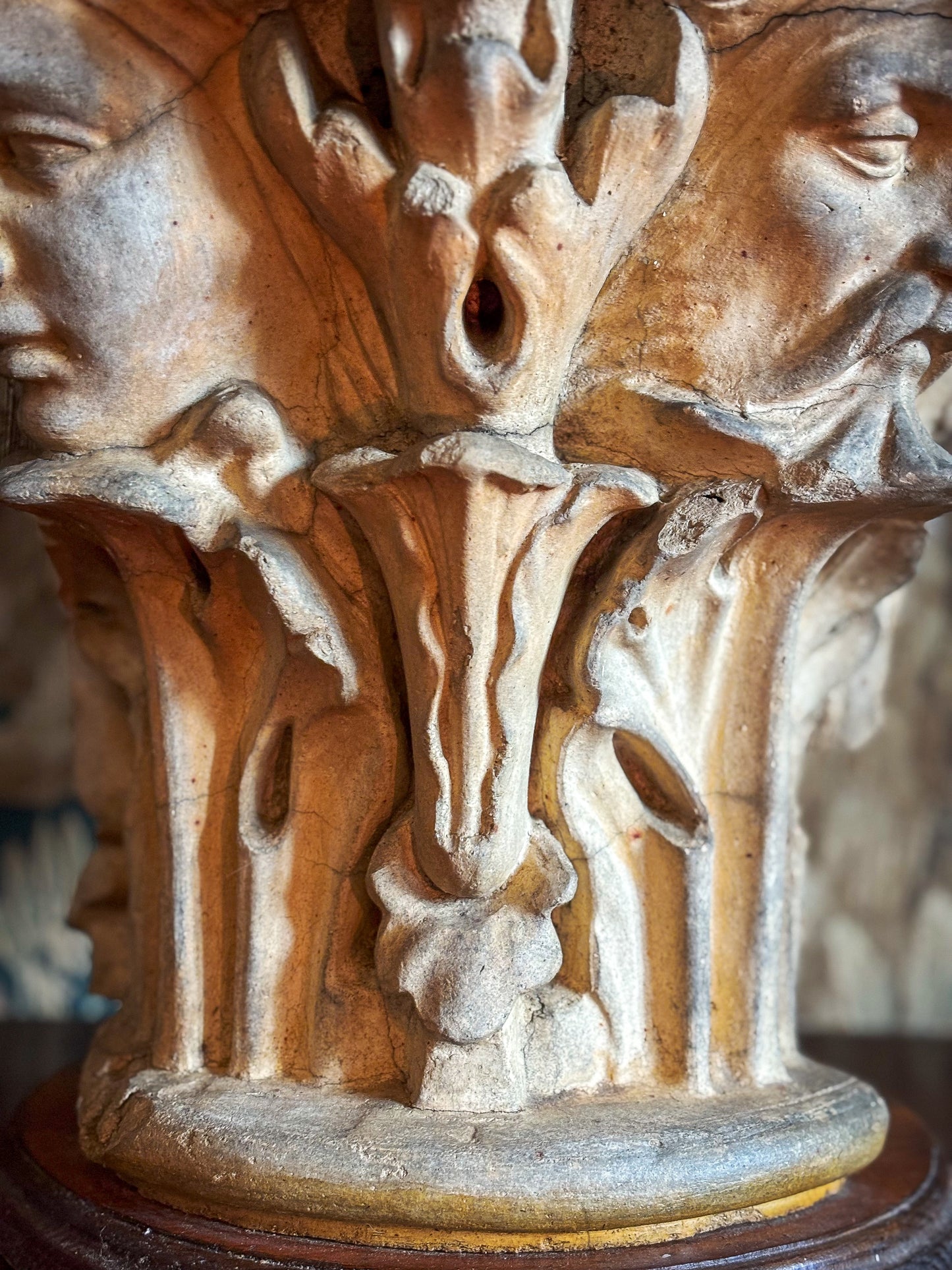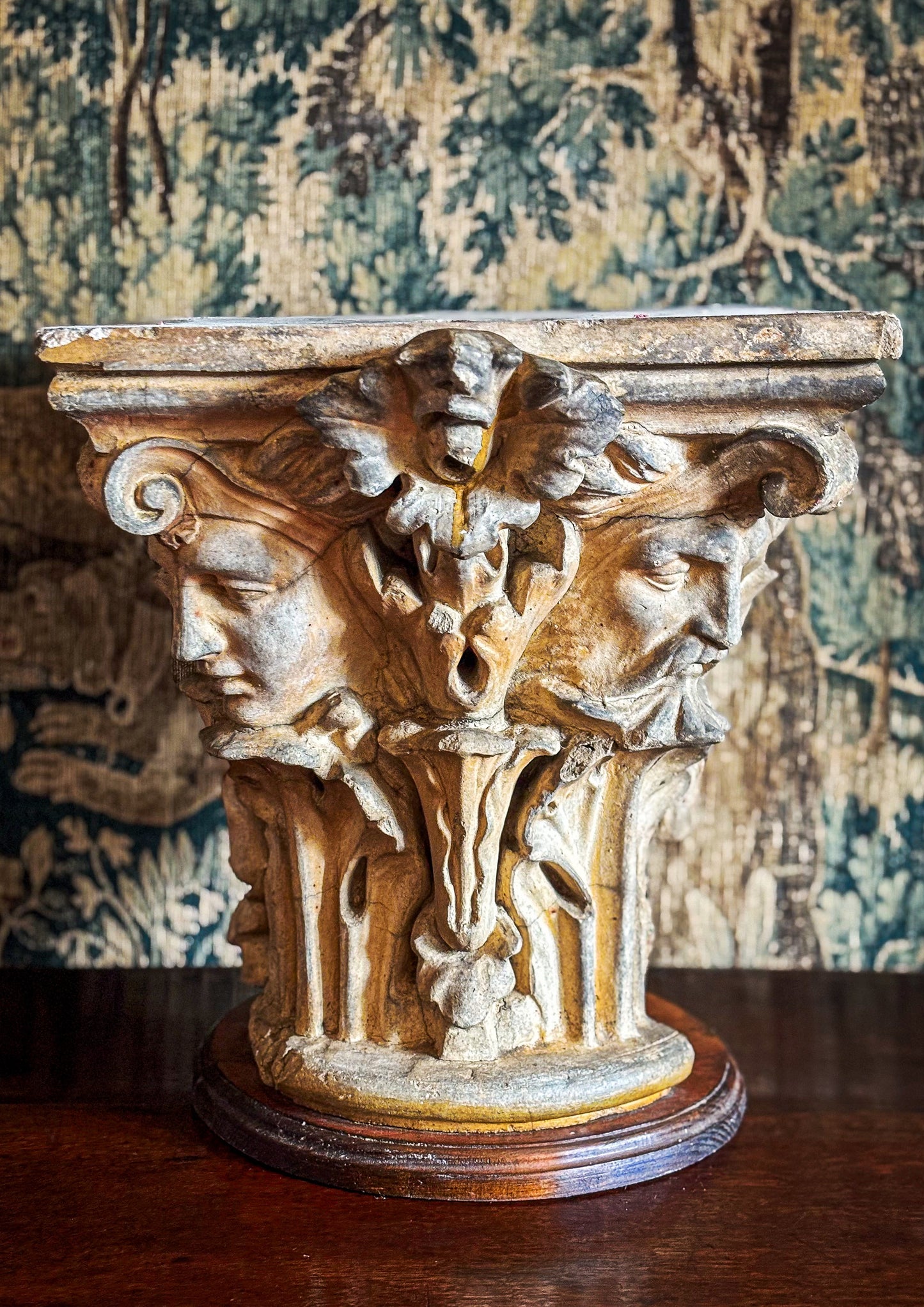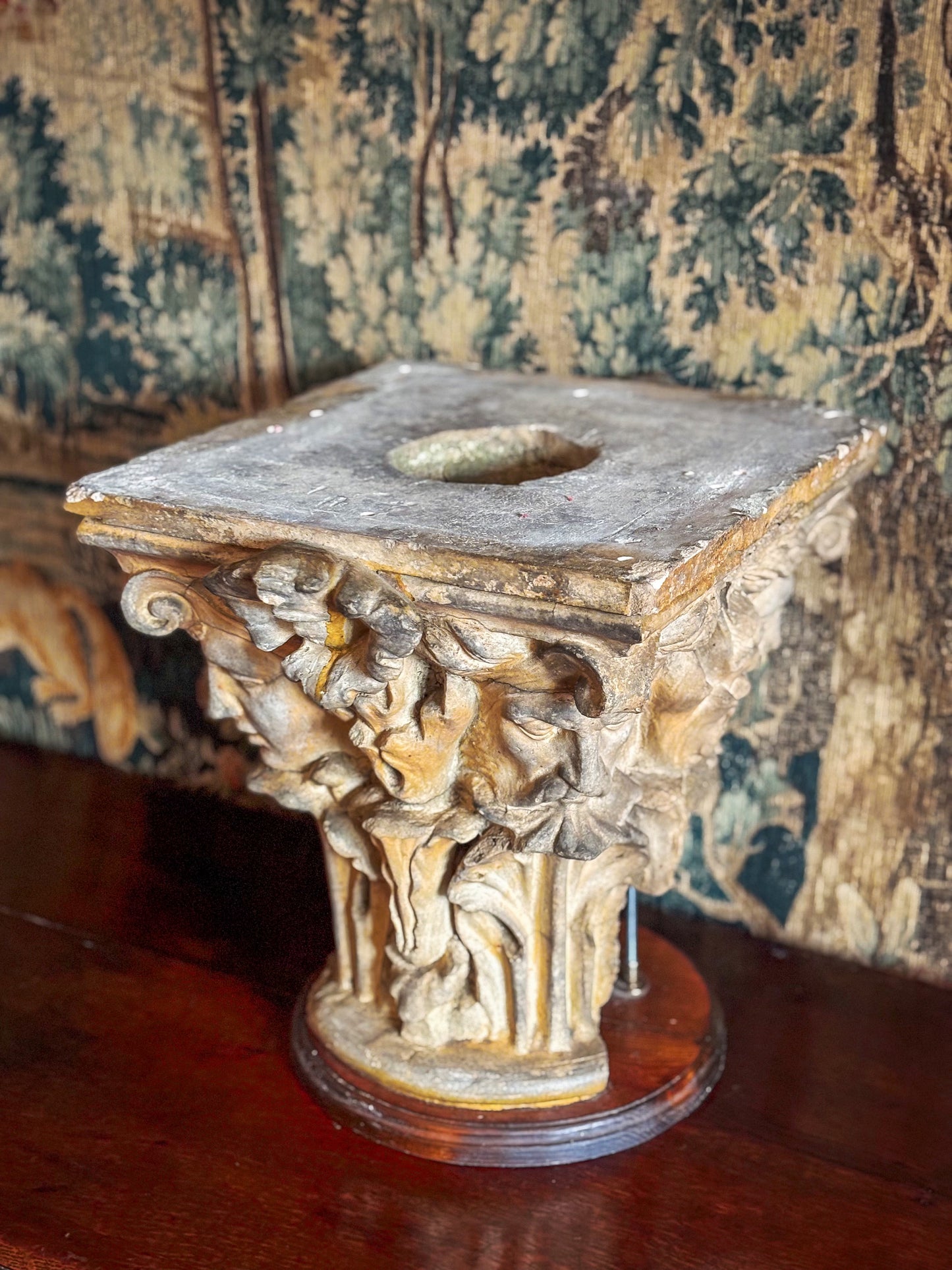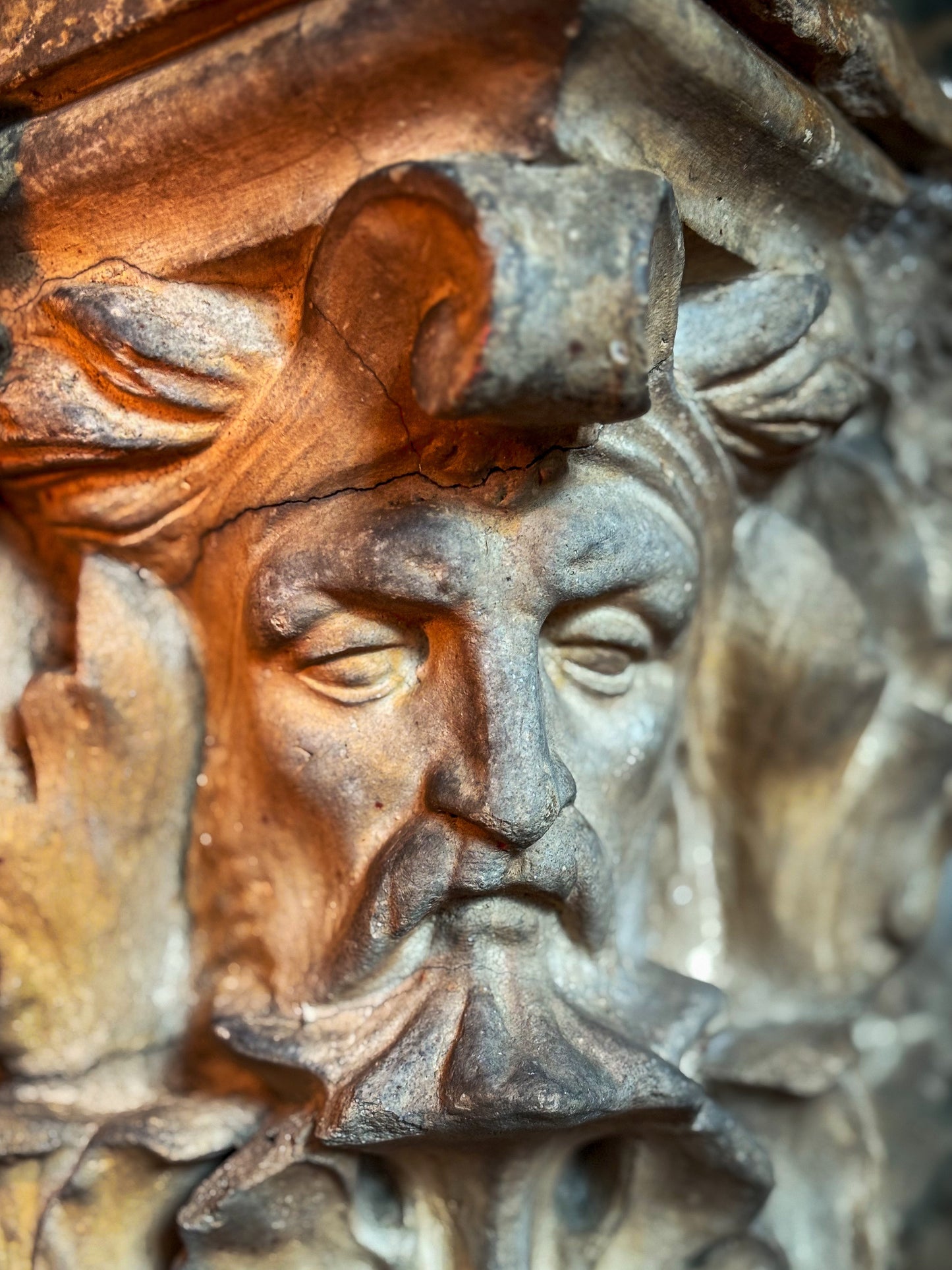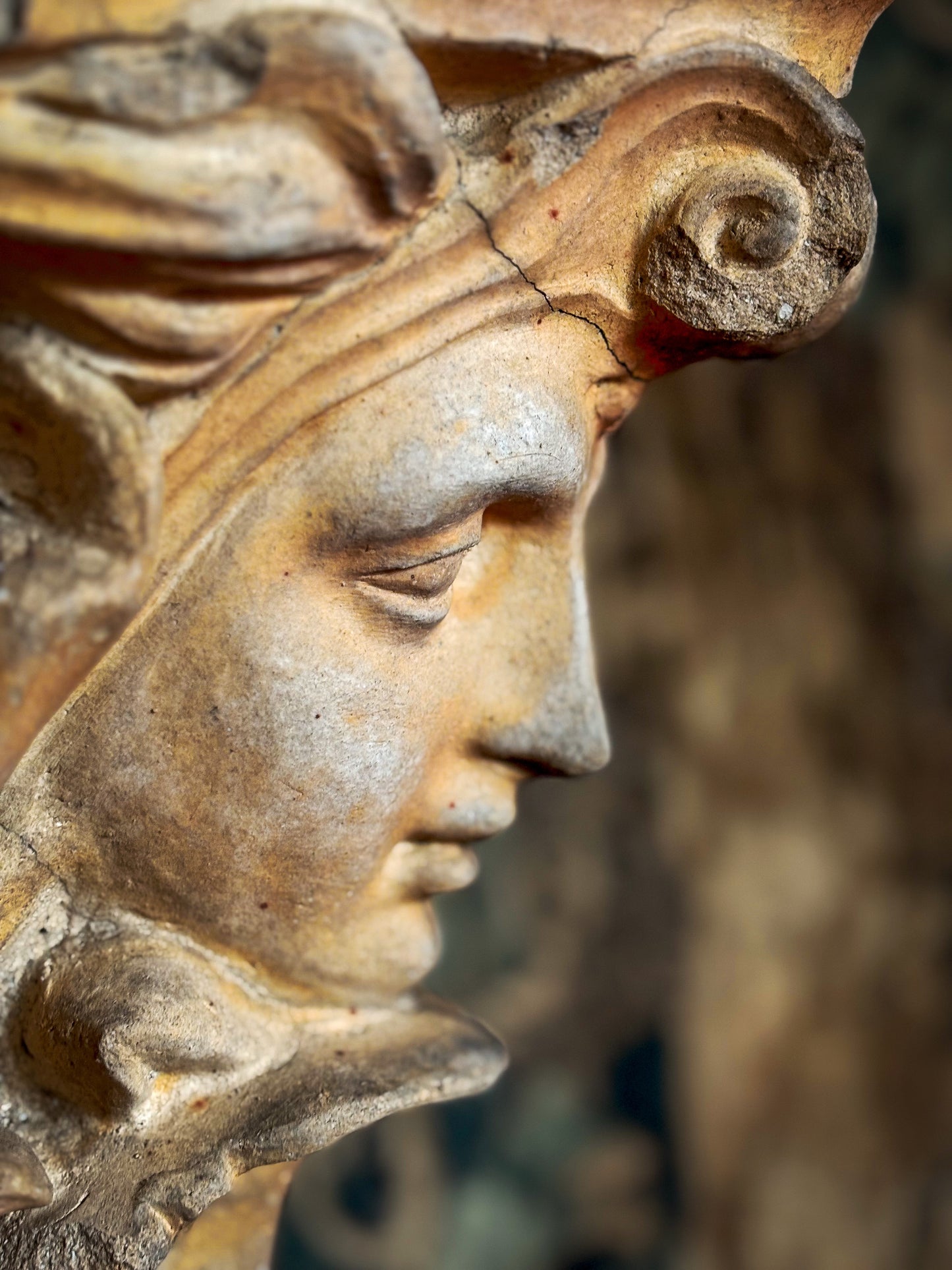Important Gothic Stone Capital c1820
Couldn't load pickup availability
Early 19th-Century Gothic Revival Cast Stone Capital – Attributed to James Wyatt’s Ashridge House
A striking early 19th-century Gothic Revival cast stone capital, richly adorned with sculptural foliage and expressive mask-like faces, characteristic of the romantic medievalism that defined the period’s revivalist architecture. This exceptional piece is attributed to James Wyatt’s Ashridge House, one of Britain’s most significant Gothic Revival country houses.
James Wyatt (1746–1813) was among the most celebrated architects of his time, renowned for his mastery of both Neoclassical and Gothic Revival styles. His work for the British aristocracy and royal commissions secured his reputation as a leading figure in the transition from Georgian to Regency architecture. Ashridge House, commissioned in the early 19th century as a grand Gothic country estate, was Wyatt’s final and most ambitious work, completed posthumously by his family and associates.
This capital exemplifies the highly decorative architectural detailing of Ashridge, where Wyatt blended Perpendicular, Decorated, and Early English Gothic elements to create a rich and evocative medieval-inspired aesthetic. The deeply carved acanthus and grotesque-like faces reflect the expressive and theatrical ornamentation favoured in early Gothic Revival architecture.
Now mounted on a later wooden base, this rare and important architectural fragment is an impressive display piece, ideal for collectors of Gothic Revival antiques, architectural salvage, or historic interiors. Whether used as a standalone statement or incorporated into a restoration project, it serves as both a striking decorative object and a tangible link to one of the most significant Gothic Revival country houses of the Regency era.
Origin: Attributed to Ashridge House, early 19th century c1821
Material: Cast stone
Condition: Some losses, consistent with age and use
Dimensions: 33 x 34.5 cm (excluding base)
Mounted on a later wooden base
A rare and evocative piece of early Gothic Revival craftsmanship, offering collectors and enthusiasts an opportunity to own a fragment of Britain’s architectural heritage.
